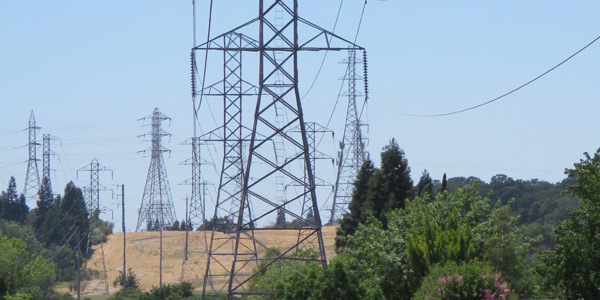By Tom Kleckner
FERC last week established hearing and settlement judge procedures for Xcel Energy Services’ challenge to GridLiance High Plains’ annual informational filing reflecting its 2019 projected net revenue requirement.
The commission also accepted Xcel’s motion that it combine the docket with a previous settlement proceeding involving GridLiance’s proposed annual transmission revenue requirement (ER19-1357, ER18-2358).
Acting for subsidiary Southwestern Public Service, Xcel in July filed a formal challenge, arguing that inclusion of GridLiance’s Oklahoma Panhandle transmission facilities in its annual update is improper.
GridLiance, which shares the same SPP transmission pricing zone as SPS, submitted its annual update for the upcoming rate year in March. It included in its projected total costs those associated with the Oklahoma assets, which have been upgraded and have a projected ATRR of nearly $8.9 million.
Xcel said the facilities’ inclusion would result in a cost shift to SPS of more than $6 million in 2019 and more than $1 million per year for other load-serving entities in the zone.
The company argued that GridLiance’s Oklahoma facilities are the only assets in service under GridLiance’s formula rate and said that its entire rate base is premised on the claim that they are eligible for recovery as transmission facilities under Attachment AI of the SPP Tariff. Xcel said GridLiance’s entire rate base should be removed from its formula rate because GridLiance has failed to demonstrate that the assets qualify as transmission facilities under Attachment AI or the commission’s seven-factor test.
FERC Order 773 established a process allowing an entity to seek a determination regarding whether facilities are “used in local distribution.” The seven-factor test involves a case-by-case analysis of seven indicators.
FERC found that Xcel’s challenge “raises issues of material fact that cannot be resolved based on the record before us” and said they would be more appropriately addressed in settlement procedures.
“In the event that the [Oklahoma facilities] fail to meet the definition of transmission facilities under Attachment AI, the [assets] could be included in SPP transmission rates if they meet the commission’s seven-factor test,” FERC wrote.
GridLiance said the order confirms its position that Attachment AI governs the definition of transmission within SPP, despite FERC’s clarification. It said “arguments to the contrary” conflict with more than a decade of precedent regarding how facilities are included within SPP’s Tariff.
“Most notable in the order is FERC’s validation of SPP’s use of Attachment AI … in determining whether facilities qualify for inclusion within SPP,” GridLiance High Plains President Brett Hooton said.
GridLiance acquired the facilities in question — 410 miles of 69- and 115-kV lines and related substation infrastructure — from Tri-County Electric Cooperative in 2016.
FERC last year accepted GridLiance’s ATRR for the facilities. (See FERC Sets GridLiance’s Zonal Placement for Hearing.)
Commission Approves Westar’s Settlement Offer
The commission also approved Westar Energy’s contested settlement offer updating loss factors in its tariff (ER18-1418).
The Kansas utility, now operating as Evergy Kansas Central after a merger with Kansas City Power & Light, was seeking to raise its loss factors from 3.07% to 3.47% based on a study it performed using data and load-flow models from 2016 supplied by SPP. That figure was a result of a 2013 settlement that locked it in for five years, with an updated study to be filed every succeeding five-year period.
FERC accepted the proposed revisions in June 2018 and established hearing and settlement judge procedures. Several Kansas utilities intervened and filed comments or protests in the proceeding, including Nemaha-Marshall Electric Cooperative Association. (See FERC Sets Westar Loss Factors for Settlement.)
Nemaha-Marshall argued the settlement was unjust and unreasonable because it removed all references to “composite loss factors” from the relevant section of Westar’s tariff. The co-op said the composite loss factors are used in several other agreements and are necessary to protect customers from paying Westar transmission losses that it does not incur and that are already being recovered under other tariffs.
FERC found Nemaha-Marshall’s contention “unpersuasive,” saying it did not raise issues of material fact concerning the loss factors’ just and reasonableness. It said language in Westar’s network integration transmission service agreements still prohibits Westar from recovering transmission losses.
“Nothing in the settlement allows for Westar to collect transmission losses already recovered under the SPP Tariff,” the commission said.
FERC directed the utility to file the revised tariff provisions within 30 days.





